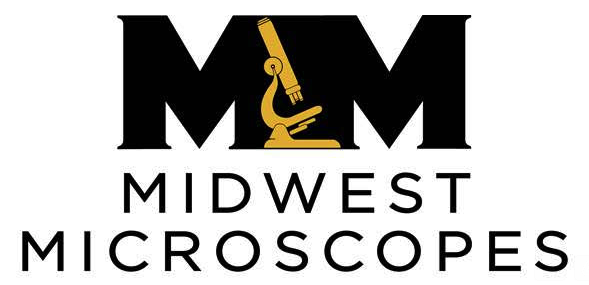Recommended Handling and Disinfecting Procedures for Nikon Microscope products to reduce the spread of infectious agents including SARS-CoV-2 (Coronavirus)
Apr 16, 2020
Dear Customers,
This letter provides recommendations for Handling and Disinfecting Nikon Microscope Products to reduce the spread of potentially infectious agents including SARS-CoV-2 (Coronavirus; the causative agent of COVID-19).
Note: This instruction is based on current global medical standards and may be updated as needed.
Recommendations for General Handling and Disinfection
1. Handling
Please follow the instructions or guidance issued by your local medical authorities and relevant organizations such as WHO *1.
Please wear appropriate Personal Protective Equipment (PPE) such as disposable gloves, gowns and goggles based on the result of infectious risk assessment in your facilities.
If your Nikon microscope systems include cameras, consider using the camera view instead of eyepieces for specimen visualization.
2. Disinfection
The following tables describe the compatibility of WHO-suggested disinfectants*1 with Nikon microscope products.
Excerpt from “c. Use of appropriate disinfectants” section in the WHO guidance*1
“While little is known about this novel virus, the comparable genetic characteristics between the virus responsible for COVID-19 and MERS-CoV suggest that the COVID-19 virus may be susceptible to disinfectants with proven activity against enveloped viruses, including sodium hypochlorite (bleach; for example, 1000 parts per million [ppm] (0.1%) for general surface disinfection and 10000 ppm (1%) for disinfection of blood spills); 62–71% ethanol; 0.5% hydrogen peroxide; quaternary ammonium compounds; and phenolic compounds, if used according to the manufacturer’s recommendations. Other biocidal agents such as 0.05–0.2% benzalkonium chloride or 0.02% chlorhexidine digluconate can be less effective.”
Of the above-listed disinfectants, 70% ethanol is safe to use for cleaning Nikon microscope products, Use 70% ethanol for the purpose of disinfection. Frequent disinfection is highly recommended.
Table 1. Compatibility of 70% EtOH with Nikon Microscope parts
| Microscope Parts*2,3 | 70% EtOH | Note |
|---|---|---|
| Eyepieces | Compatible | Moisten lens cleaning tissue with 70% ethanol and wipe the surface of the lens and rubber gaskets (if present on eyepieces). To schedule a cleaning procedure, please contact us here: CONTACT US |
| Objective Lens | Compatible | |
| Body | Compatible | Moisten low-lint lab tissue with 70% ethanol and wipe the surface. |
| Stage | Compatible | |
| Accessories | Compatible |
*2 Internal optical components and filter cubes should only be cleaned by Nikon-authorized service technicians.
*3 Pay special attention to commonly touched parts of the microscope such as focus knobs, nosepieces, and stage handles when cleaning.
According to WHO guidance*1, disinfectants which are listed in Table 2 below may also be effective against COVID-19 virus. However, these disinfectants may negatively affect the material and performance of Nikon products. Therefore, DO NOT use the disinfectants listed in Table 2 for Nikon microscope products. Use 70% ethanol instead.
Table 2. Disinfectants that are not compatible with Nikon Microscope parts
| Microscope Parts | Disinfectant | Compatibility |
|---|---|---|
| Eyepieces | Sodium hypochlorite (bleach; for example, 1000 parts per million [ppm] (0.1%) for general surface disinfection and 10000 ppm (1%) for disinfection of blood spills); 0.5% hydrogen peroxide; quaternary ammonium compounds; and phenolic compounds; 0.05–0.2% benzalkonium chloride; 0.02% chlorhexidine digluconate. |
NOT COMPATIBLE |
| Objective Lens | NOT COMPATIBLE | |
| Body | NOT COMPATIBLE | |
| Stage | NOT COMPATIBLE | |
| Accessories | NOT COMPATIBLE |
If the disinfecting procedure described in this document differs from cleaning instructions provided in your Nikon User Manual, please follow the instructions in the User Manual and handle the parts as though potentially infectious.
Parts Description

For your safety and the safety of others, please follow the guidelines below:
- Adhere to instructions and guidance from local medical authorities and relevant organizations.
Please follow the instructions and guidance issued by your local medical authorities and relevant organizations. You can obtain these documents by consulting with your local offices of the authorities and organizations or by visiting their websites. Some example websites are provide below.- World Health Organization: https://www.who.int
- European Commission: https://ec.europa.eu/competition/state_aid/what_is_new/covid_19.html
- U.S. Food and Drug Administration: https://www.fda.gov/
- Occupational Safety and Health Administration: https://www.osha.gov/
- Follow User Manual instruction
Please follow the instructions regarding handling and cleaning provided in the User Manual of your product. If you cannot find your user manual, please submit a request through our website. - Potential Risk
Although your product is handled and cleaned according to the instruction in the User Manual or the General Handling and Disinfecting Instructions provided in this document, we cannot completely deny the potential risk of infection. Therefore, for your safety, we recommend that you handle your product as potentially infectious and follow the instructions and standards from your local medical authorities and relevant organizations.
